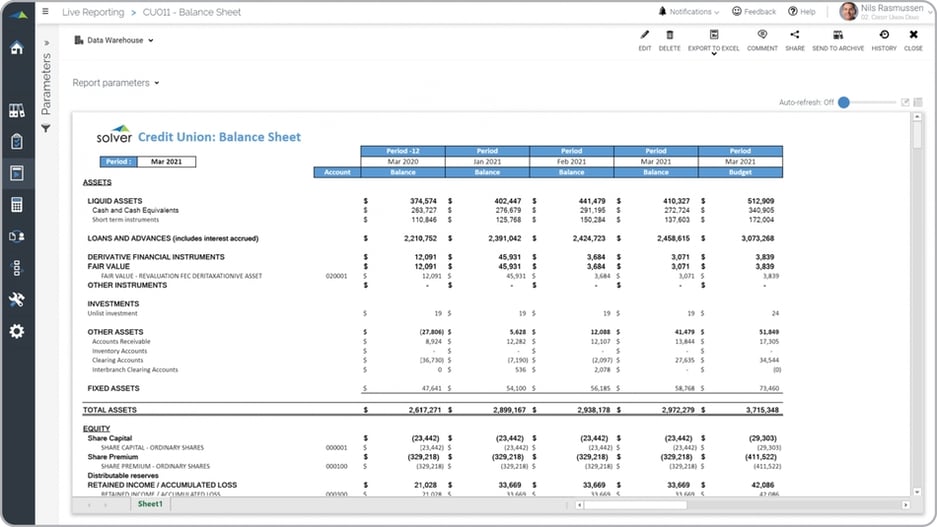Related Posts
- Subscription Billing Auto Forecast for SaaS Companies using Dynamics 365 Business Central
- Top 50 Opportunities Report for SaaS Companies using Dynamics 365 BC
- Subscription Sales by Contract Length Report for SaaS Companies using Dynamics 365 Business Central
- Multi-Year Profit & Loss Forecast Model for SaaS Companies using Dynamics 365 Business Central
- Lead Target Model for SaaS Companies using Dynamics 365 Business Central
Trended Balance Sheet for Credit Unions
Purpose of Trended Balance Sheet Reports Credit Unions use Trended Balance Sheet Reports to give executives the ability to see trends for both detailed and summarized views of assets and liabilities for each month up to the current period. When used as part of good business practices in Executive- and Financial Planning & Analysis (FP&A) departments, a company can improve its strategies and performance, and it can reduce the chances that leaders make poor decisions because they don't see if a figure is a trend or an outlier.
Example of a Trended Balance Sheet Report Here is an example of a Trended Balance Sheet with dynamic listing of year-to-date months and rows that can expand/collapse to simplify analysis as well as actual to budget comparisons.

Who Uses This Type of Report? The typical users of this type of report are: Executives, Regional Managers, Branch Managers, CFOs, Analysts. Other Reports Often Used in Conjunction with Trended Balance Sheet Reports Progressive Executive- and Financial Planning & Analysis (FP&A) departments sometimes use several different Trended Balance Sheet Reports, along with income statement variance- and trend reports, cash flow statements, financial dashboards, KPI dashboards, budget models and other management and control tools.
Where Does the Data for Analysis Originate From? The Actual (historical transactions) data typically comes from enterprise resource planning (ERP) systems like: Microsoft Dynamics 365 (D365) Finance, Microsoft Dynamics 365 Business Central (D365 BC), Microsoft Dynamics AX, Microsoft Dynamics NAV, Microsoft Dynamics GP, Microsoft Dynamics SL, Sage Intacct, Sage 100, Sage 300, Sage 500, Sage X3, SAP Business One, SAP ByDesign, Acumatica, Netsuite and others. In analyses where budgets or forecasts are used, the planning data most often originates from in-house Excel spreadsheet models or from professional corporate performance management (CPM/EPM) solutions.
What Tools are Typically used for Reporting, Planning and Dashboards? Examples of business software used with the data and ERPs mentioned above are:
- Native ERP report writers and query tools
- Spreadsheets (for example Microsoft Excel)
- Corporate Performance Management (CPM) tools (for example Solver)
- Dashboards (for example Microsoft Power BI and Tableau)
To learn more, visit the Resource Library.
TAGS: Reporting, Planning, Forecasting, Analysis, Budgeting, FP&A, KPIs, ERP, Industry, Financial Reporting, Template Library
Global Headquarters
Solver, Inc.
Phone: +1 (310) 691-5300
